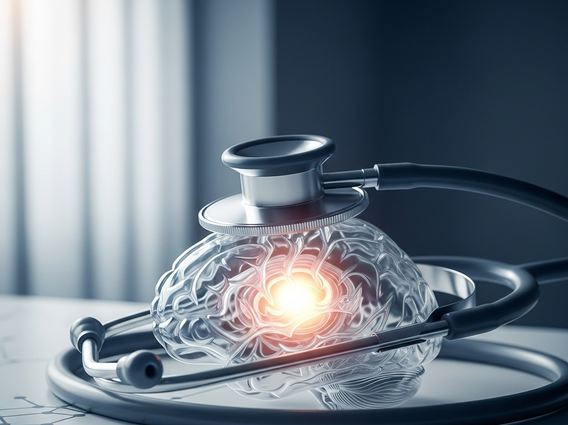Alcohol and Cancer
The relationship between alcohol consumption and cancer risk is a significant public health concern. Research consistently demonstrates a clear link, highlighting how even moderate drinking can contribute to the development of various cancers.

Key Takeaways
- Alcohol is a known carcinogen, directly increasing the risk of several cancer types.
- There is no safe level of alcohol consumption when it comes to cancer risk; even light or moderate drinking can elevate risk.
- Alcohol contributes to cancer development through DNA damage, inflammation, and hormonal disruption.
- Specific cancers strongly linked to alcohol include those of the mouth, throat, esophagus, liver, and breast.
- Reducing or eliminating alcohol intake is a key strategy for alcohol and cancer prevention.
Understanding Alcohol and Cancer Risk
The scientific community has established a definitive connection between alcohol consumption and an increased likelihood of developing cancer. This understanding is crucial for public health and individual choices regarding lifestyle.
Does alcohol cause cancer? Exploring the link.
Indeed, alcohol is classified as a Group 1 carcinogen by the International Agency for Research on Cancer (IARC), meaning there is convincing evidence that it causes cancer in humans. The question, “Does alcohol cause cancer?” can be answered with a resounding yes. The ethanol in alcoholic beverages, and its metabolic byproduct acetaldehyde, are the primary culprits. These substances can damage DNA and proteins, leading to uncontrolled cell growth.
Link between alcohol consumption and cancer risk.
The link between alcohol consumption and cancer risk is dose-dependent, meaning the more alcohol consumed, the higher the risk. However, it’s important to understand that even small amounts can contribute to this risk. This pervasive link is observed across various populations and geographical regions, underscoring its global significance. Public health campaigns often emphasize this connection to encourage healthier drinking habits or abstinence.
Global perspective on alcohol and cancer risk.
Globally, alcohol consumption accounts for a significant proportion of cancer cases and deaths. Different cultures have varying drinking patterns, but the biological mechanisms by which alcohol increases cancer risk remain consistent worldwide. This global perspective highlights the universal challenge of addressing alcohol-related cancers and implementing effective alcohol and cancer prevention strategies.
Specific Cancers Linked to Alcohol and Cancer Risk
Alcohol consumption doesn’t just increase general cancer risk; it is specifically implicated in several distinct types of cancer. Understanding these specific connections can help individuals appreciate the breadth of alcohol’s impact on health.
Types of cancer caused by alcohol consumption.
There are at least seven types of cancer for which alcohol is a known cause. These include cancers of the head and neck, esophagus, liver, breast, and colorectum. The risk for these cancers increases with the amount of alcohol consumed over time. The cumulative exposure to alcohol’s harmful effects plays a significant role in the development of these malignancies.
Oral, throat, and esophageal alcohol and cancer risk.
For cancers of the mouth, pharynx (throat), and larynx (voice box), alcohol is a major risk factor, particularly when combined with tobacco use. Alcohol can irritate the cells lining these areas, making them more susceptible to damage and cancerous changes. Similarly, esophageal cancer, especially squamous cell carcinoma, has a strong association with alcohol intake. The direct contact of alcohol with these tissues contributes significantly to the alcohol and cancer risk in these regions.
Liver and breast cancer risk from alcohol.
Liver cancer is another type strongly linked to alcohol, primarily due to alcohol-related liver disease, such as cirrhosis. Chronic heavy drinking damages liver cells, leading to inflammation and scarring, which can progress to cancer. For women, even moderate alcohol consumption increases breast cancer risk. Alcohol can affect estrogen levels and other hormones, which are known to play a role in breast cancer development. Understanding these specific connections is vital for assessing personal alcohol and cancer risk.
Here’s a summary of major cancer types linked to alcohol:
| Cancer Type | Primary Mechanism of Alcohol’s Effect | Risk Factor Level (General) |
|---|---|---|
| Mouth, Pharynx, Larynx | Direct tissue irritation, acetaldehyde exposure | High (especially with smoking) |
| Esophagus (Squamous Cell Carcinoma) | Direct tissue irritation, acetaldehyde exposure | High |
| Liver | Alcoholic liver disease, cirrhosis, inflammation | High (dose-dependent) |
| Breast | Increased estrogen levels, DNA damage | Moderate (even at low intake) |
| Colorectum | Acetaldehyde, folate malabsorption | Moderate to High |
How Alcohol Increases Cancer Risk in the Body
The mechanisms by which alcohol contributes to cancer development are complex and multifaceted. It’s not just one pathway but a combination of biological processes that elevate alcohol and cancer risk.
Mechanisms: How does alcohol increase cancer risk?
Several biological mechanisms explain how alcohol increases cancer risk. One primary way is through the metabolism of ethanol into acetaldehyde, a toxic chemical and a probable human carcinogen. Acetaldehyde can damage DNA, preventing it from repairing itself, and interfere with DNA synthesis. Additionally, alcohol can generate reactive oxygen species (free radicals), which can also damage DNA, proteins, and lipids through oxidative stress.
DNA damage and alcohol’s effect on cancer development.
Alcohol’s effect on cancer development is largely driven by its ability to cause DNA damage. Acetaldehyde binds to DNA, forming adducts that can lead to mutations. These mutations can activate oncogenes (genes that promote cancer growth) or inactivate tumor suppressor genes (genes that prevent cancer growth). This direct damage to the genetic material is a critical step in the initiation and progression of cancer.
Inflammation and hormonal changes from alcohol.
Beyond DNA damage, alcohol can also promote chronic inflammation, which is a known contributor to cancer development. Persistent inflammation creates an environment conducive to cell proliferation and survival, potentially leading to cancerous changes. Furthermore, alcohol can alter hormone levels, particularly increasing estrogen in women, which is a significant factor in breast cancer risk. It can also impair the body’s ability to absorb essential nutrients like folate, which plays a role in DNA repair, further exacerbating alcohol and cancer risk.
Moderate Drinking and Your Alcohol and Cancer Risk
The concept of “moderate drinking” often carries a perception of safety, but when it comes to cancer, the picture is more nuanced. It’s important to critically assess the impact of even small amounts of alcohol on your health.
Can moderate drinking cause cancer?
A common question is, “Can moderate drinking cause cancer?” The answer, unfortunately, is yes. While the risk increases with heavier consumption, studies show that even light to moderate alcohol intake (e.g., one drink per day for women, up to two for men) is associated with an increased risk of certain cancers, particularly breast and esophageal cancers. There is no threshold below which alcohol’s carcinogenic effects are entirely absent.
No safe level of alcohol and cancer risk.
Leading health organizations, including the World Health Organization (WHO) and the American Institute for Cancer Research (AICR), state that there is no safe level of alcohol consumption for cancer prevention. Any amount of alcohol increases alcohol and cancer risk. This message is critical for public understanding, as it challenges the popular notion that moderate drinking is entirely benign or even beneficial for health.
Assessing personal alcohol and cancer risk factors.
Understanding your personal alcohol and cancer risk involves considering not only your drinking habits but also other factors such as family history of cancer, genetics, diet, and smoking status. For example, individuals with a family history of breast cancer may face an even higher risk from alcohol consumption. Consulting with a healthcare professional can help in assessing individual risk and making informed decisions about alcohol intake.
Reducing Your Alcohol and Cancer Risk
Given the clear link between alcohol and cancer, taking steps to reduce or eliminate alcohol consumption is a powerful strategy for cancer prevention. There are practical approaches individuals can adopt to lower their alcohol and cancer risk.
Alcohol and cancer prevention strategies.
The most effective alcohol and cancer prevention strategy related to alcohol is to avoid drinking it altogether. For those who choose to drink, adhering to recommended guidelines for low-risk consumption is crucial, though it’s important to remember that no level is entirely risk-free for cancer. These strategies often involve setting limits, being mindful of drink sizes, and having alcohol-free days.
- **Limit intake:** If you drink, limit consumption to no more than one drink per day for women and two drinks per day for men.
- **Choose alcohol-free days:** Incorporate days into your week where you do not consume any alcohol.
- **Be aware of serving sizes:** A standard drink is 12 oz of regular beer, 5 oz of wine, or 1.5 oz of distilled spirits.
- **Avoid binge drinking:** This pattern of heavy consumption significantly increases health risks, including cancer.
Limiting consumption to lower alcohol and cancer risk.
Even small reductions in alcohol intake can contribute to lowering your alcohol and cancer risk. For individuals who find complete abstinence challenging, setting realistic goals for limiting consumption is a valuable step. This might involve reducing the number of drinks per week, avoiding high-alcohol beverages, or alternating alcoholic drinks with non-alcoholic ones.
Lifestyle changes for reduced cancer risk.
Beyond alcohol, a holistic approach to lifestyle can significantly reduce overall cancer risk. This includes maintaining a healthy weight, eating a balanced diet rich in fruits and vegetables, engaging in regular physical activity, and avoiding tobacco products. These lifestyle choices synergistically contribute to a healthier body and a lower likelihood of cancer development, complementing efforts in alcohol and cancer prevention.
Alcohol’s Effect on Cancer Development and Risk
The impact of alcohol extends beyond simply initiating cancer; it also plays a role in how existing cancers progress and the likelihood of recurrence. Understanding this broader context of alcohol’s effect on cancer development is vital.
Alcohol’s role in cancer progression.
For individuals already diagnosed with cancer, continued alcohol consumption can negatively influence treatment outcomes and disease progression. Alcohol can interfere with the effectiveness of certain cancer treatments and may exacerbate side effects. The continued exposure to acetaldehyde and inflammatory processes can further fuel the growth of existing tumors, highlighting alcohol’s effect on cancer development even after diagnosis.
Recurrence risk and alcohol consumption.
After successful cancer treatment, patients are often advised to limit or avoid alcohol due to its potential impact on recurrence risk. For some cancers, such as head and neck cancers, continued drinking can increase the chance of the cancer returning or a new primary cancer developing. This is a critical consideration for survivors aiming to maintain long-term health and minimize their alcohol and cancer risk post-treatment.
Understanding long-term alcohol and cancer risk.
The long-term alcohol and cancer risk is cumulative. The more alcohol consumed over a lifetime, the greater the potential for DNA damage and other carcinogenic effects. This long-term perspective underscores the importance of consistent healthy choices regarding alcohol intake throughout one’s life. Even if immediate effects aren’t apparent, the cellular damage can accumulate, manifesting as cancer years down the line.
Frequently Asked Questions
Is there any type of alcohol that is safer than others regarding cancer risk?
No, there is no evidence to suggest that one type of alcoholic beverage is safer than another in terms of cancer risk. Whether it’s beer, wine, or spirits, the ethanol content is the primary factor that contributes to cancer. The body metabolizes ethanol in the same way, regardless of the drink’s form, producing carcinogenic compounds like acetaldehyde.
Therefore, focusing on the amount of pure alcohol consumed, rather than the type of drink, is what matters most for assessing alcohol and cancer risk. All alcoholic beverages carry the same inherent risks for cancer development.
Does quitting alcohol reduce my cancer risk?
Yes, quitting alcohol can significantly reduce your cancer risk, even if you have been a heavy drinker for many years. The body has remarkable healing capabilities, and stopping alcohol consumption allows it to repair some of the damage. For some cancers, like oral and esophageal cancers, the risk can decrease substantially within a few years of abstinence.
While some risk may persist from past consumption, the benefits of reducing or eliminating alcohol are clear and immediate, contributing positively to alcohol and cancer prevention. It’s one of the most impactful lifestyle changes you can make to lower your overall cancer risk.
What are the signs that alcohol might be affecting my cancer risk?
There are no specific “signs” that directly indicate alcohol is affecting your cancer risk in a way that is immediately visible. Cancer development is often a silent process in its early stages. However, chronic heavy drinking can lead to other health issues like liver damage (fatty liver, hepatitis, cirrhosis), which are precursors to liver cancer.
General symptoms of cancer, such as unexplained weight loss, persistent fatigue, new lumps, or changes in bowel habits, should always be evaluated by a doctor, regardless of alcohol intake. The most effective way to address alcohol and cancer risk is through prevention and awareness, rather than waiting for symptoms.
How does alcohol interact with other cancer risk factors?
Alcohol often interacts synergistically with other cancer risk factors, meaning their combined effect is greater than the sum of their individual effects. For example, the combination of alcohol and tobacco use dramatically increases the risk of head and neck, and esophageal cancers, far more than either substance alone. Alcohol can also exacerbate the effects of poor diet or genetic predispositions.
Understanding these interactions is crucial for a comprehensive approach to cancer prevention. Addressing multiple risk factors simultaneously, such as quitting smoking and reducing alcohol intake, offers the most significant benefits for lowering overall alcohol and cancer risk.





